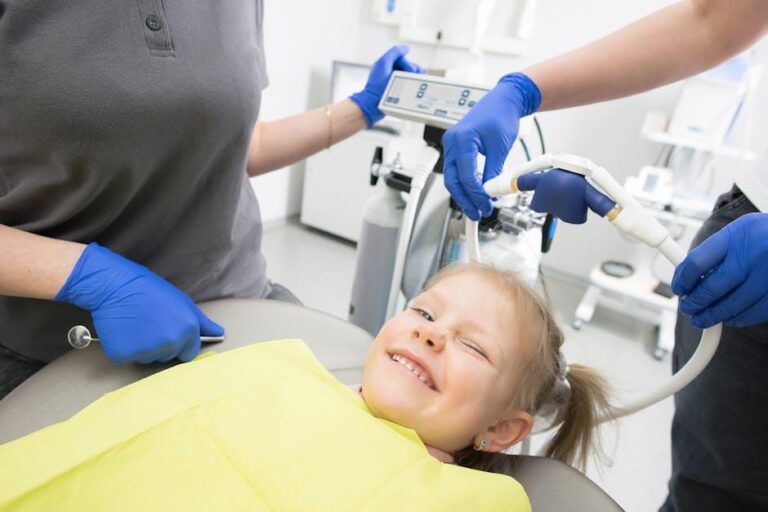
1 in 3 Kids Has Dental Problems, Poll Finds – U.S. News & World Report
A recent poll highlighted by U.S. News & World Report has brought a startling statistic to light: 1 in 3 kids in the United States suffers from dental problems. This significant dental health issue among children has widespread consequences, not only for their overall wellbeing but also in terms of long-term healthcare costs and quality of life.
In this comprehensive article, we’ll explore the key findings of the poll, understand the causes behind children’s dental issues, discuss practical tips for prevention, and review the benefits of early dental care to ensure children grow up with healthy smiles.
Understanding the Scope: What the Poll Reveals
The poll conducted across various states surveyed thousands of families to identify common dental health issues facing children. The findings revealed that approximately 33% of children aged 2 to 17 have experienced some form of dental problem, including cavities, gum infections, or other oral health concerns.
| Dental Problem | Percentage of Affected Kids |
|---|---|
| Dental Cavities (Tooth Decay) | 22% |
| Gum Disease (Gingivitis) | 7% |
| Other Oral Issues (Pain, Infections) | 4% |
These problems not only cause discomfort but can also lead to difficulties in eating, speaking, and concentrating in school. Left untreated, dental issues may develop into more severe medical concerns.
Common Causes of Dental Problems in Kids
Identifying the root causes of dental problems helps parents and caregivers take effective preventive measures. Here are some major factors contributing to poor dental health in children:
- Poor Oral Hygiene: Inadequate brushing and flossing habits lead to plaque buildup and cavities.
- Frequent Sugar Intake: Excessive consumption of sugary snacks, candies, and sodas encourages tooth decay.
- Lack of Regular Dental Checkups: Skipping dental visits prevents early detection and treatment of issues.
- Limited Access to Dental Care: Socioeconomic factors can restrict access to preventive and corrective dental services.
- Inconsistent Use of Fluoride: Fluoride strengthens enamel, so its absence in water or toothpaste raises the risk of cavities.
The Importance of Early Dental Care for Children
Early dental care is vital in combating the high prevalence of dental problems among kids. Establishing proper oral hygiene habits and pediatric dental visits early can significantly reduce the risk of future complications.
Key benefits of early dental care include:
- Prevention of Tooth Decay: Early interventions help protect the enamel and reduce cavities.
- Healthy Development of Teeth and Jaw: Monitoring ensures proper alignment and growth, preventing orthodontic issues.
- Reduced Dental Anxiety: Positive early experiences reduce fear of dentists later in life.
- Education for Families: Caregivers learn best practices for maintaining oral health at home.
When Should Children Visit the Dentist?
The American Dental Association recommends that a child’s first dental visit occur within six months after the first tooth appears, and no later than their first birthday. Regular visits every six months thereafter allow for ongoing monitoring.
Practical Tips for Maintaining Children’s Dental Health
Parents and caregivers can play a proactive role in protecting their child’s dental health. Here are some practical tips to reduce the risk of dental problems:
- Brush Twice Daily: Use a soft-bristled toothbrush and fluoride toothpaste suited for the child’s age.
- Floss Regularly: Begin flossing once two teeth touch to prevent cavity buildup between them.
- Limit Sugary Snacks and Drinks: Replace sugary foods with healthy alternatives like fruits and vegetables.
- Encourage Drinking Water: Water, especially fluoridated tap water, helps rinse away food particles.
- Schedule Regular Dental Exams: Professional cleanings and exams help catch problems early.
- Lead by Example: Parents who demonstrate good oral hygiene encourage children to follow suit.
Case Study: Turning Around a Child’s Dental Health
Consider the example of Emily, a 7-year-old whose family neglected routine dental care. Emily had frequent toothaches and difficulty eating. After her first dental checkup, she was diagnosed with multiple cavities. With a combination of dental treatment, improved home care routines, and diet changes, Emily’s oral health improved dramatically over six months:
| Before Intervention | After 6 Months |
|---|---|
| 3 Cavities, Bleeding Gums | No Cavities, Healthy Gums |
| Poor Brushing Technique | Brushing Twice Daily With Fluoride Toothpaste |
| High Sugar Snacks Daily | Balanced, Low-Sugar Diet |
| Irregular Dental Visits | Regular 6-Month Checkups |
Emily’s story highlights that dental problems in kids can be effectively managed and prevented with the right knowledge and care.
Conclusion: Promoting Healthy Smiles for Every Child
The poll findings reported by U.S. News & World Report serve as a crucial reminder of the widespread dental challenges facing children in the U.S. With 1 in 3 kids affected, parents, healthcare providers, and communities must prioritize children’s dental health through education, early care, and accessible services.
By fostering healthy habits, ensuring timely dental visits, and reducing sugar consumption, families can protect their children from painful and costly dental problems. Together, we can help every child enjoy a bright smile and a healthy future.
Remember: good dental care starts early and lasts a lifetime.


